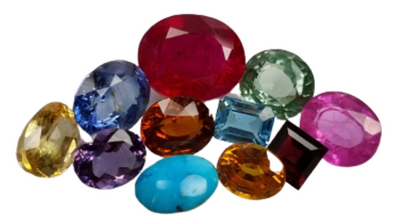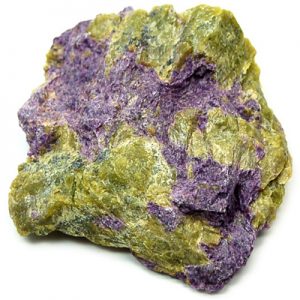Stichtite: Gemstones Information
Stichtite is a unique and visually striking mineral renowned for its vivid purple to pink coloration and waxy luster. Named after Robert Carl Sticht, a German chemist, this mineral holds both geological and cultural significance. Below is an exploration of its properties, occurrences, uses, and significance.
Physical Properties:
Stichtite typically occurs as fine-grained aggregates, often with a massive or botryoidal (grape-like) structure. It is a hydrated magnesium chromium carbonate mineral with the chemical formula Mg6Cr2CO3(OH)16·4H2O. Its color ranges from light pink to deep purple, often with swirling patterns, and it exhibits a waxy or greasy luster. Stichtite is relatively soft, with a Mohs hardness of around 1 to 2, making it easily susceptible to scratching.
Occurrence:
Stichtite is primarily found in association with serpentinite rocks, which are formed through the alteration of ultramafic rocks like peridotite or pyroxenite. These rocks undergo a process known as serpentinization, resulting in the formation of serpentinite and the release of fluids rich in magnesium and chromium, among other elements. Stichtite forms as a secondary mineral in these environments, often alongside other minerals such as chromite, magnetite, and lizardite.
Geological Significance:
The presence of stichtite serves as an indicator of specific geological processes, particularly the alteration of ultramafic rocks. Serpentinite-hosted deposits where stichtite is found may also contain economically valuable minerals like chromite, nickel, and platinum-group elements. Understanding the occurrence and distribution of stichtite contributes to the broader field of economic geology, aiding in the exploration and assessment of mineral resources.
Cultural Significance:
Beyond its geological importance, stichtite holds cultural significance, particularly among indigenous Australian communities. The mineral is found predominantly in Tasmania, Australia, where it is known as “Atlantisite” when occurring in combination with serpentine. In Aboriginal culture, stichtite is revered for its healing properties and is believed to promote tranquility, emotional balance, and spiritual growth. It is often used in spiritual practices and as a decorative stone in jewelry and crafts.
Industrial Uses:
Stichtite’s main commercial application lies in lapidary and ornamental uses. Its vibrant color and unique appearance make it a popular choice for crafting jewelry, beads, cabochons, and ornamental carvings. However, due to its relatively soft nature, stichtite is not commonly used in industrial applications requiring hardness or durability. Instead, it is valued more for its aesthetic qualities and metaphysical properties.
Environmental Considerations:
While stichtite mining is not widespread, environmental considerations are still relevant, particularly in regions where it occurs naturally. Responsible mining practices are crucial to minimize habitat disturbance and ecosystem degradation associated with mineral extraction. Additionally, awareness of cultural sensitivities, especially regarding indigenous beliefs and traditions associated with stichtite, is essential to foster respectful and sustainable interactions with the mineral and its surrounding communities.
Conclusion:
Stichtite is a visually captivating mineral with geological, cultural, and aesthetic significance. Its occurrence in serpentinite rocks provides insights into specific geological processes, while its vibrant color and spiritual associations make it highly valued in cultural practices and the lapidary industry. Balancing appreciation for stichtite’s beauty with environmental stewardship and respect for indigenous traditions underscores the importance of responsible mineral exploration and utilization.





